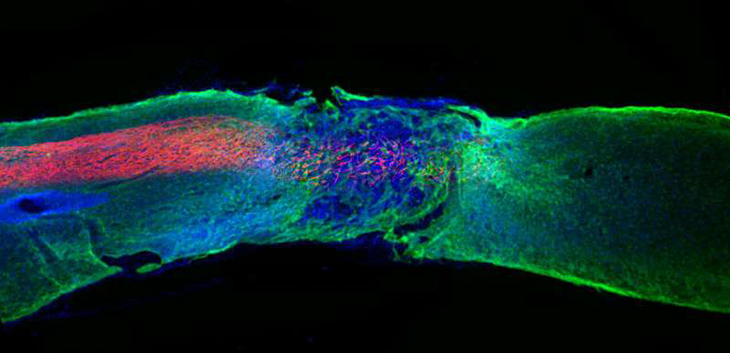Science Team Sees Major Transformation In Paralyzed Mice In Just 4 Weeks As They Begin To Walk Again

In an incredible new study, a “bioactive scaffold” has managed to regenerate damaged cells within the nervous system of mice that were paralyzed due to spinal cord injuries. Incredibly, this allowed them to walk again just three to four weeks after they began the treatment, which was an incredible feat that had never been achieved before.
These treatments now open the gateway into more research that looks into curing paralysis, which is something that has never happened before. In fact, this research could even be the subject of FDA trials within the first few months of the new year.
As for Northwestern University’s Samuel Stupp, who led the trial, he said, “I cannot tell you how excited I am about this work. This is probably the most important paper I’ve ever written, and it describes a piece of science that was truly unknown.”
Since spinal cord injuries normally mean the end of any type of normal movement for the person or creature involved, this means that on average, there are less than 3% of the population within the United States living with these types of injuries that will ever manage to regain function or recover movement in their legs.
This is also due to the fact that one of the major reasons is the central nervous system isn’t effective at repairing itself. Plus, the scarring that happens after such horrific injuries usually ends up as a physical barrier to regeneration as well.
For some cases, the external electrical stimulation actually aids in retraining basic functions in the hands, as well as in the legs when in a therapy program. Meanwhile the Good News Network also shared a report on how one Australian quadriplegic managed to regain the use of his hands after going through a triple nerve transplant.
This new method works by using an injection, but instead of injecting stem cells, proteins or modified genets to attempt to program the tissues to repair themselves, Stupp’s team did something incredible. They used nanofibers no bigger than one ten-thousandth the width of a human hair, in order to mimic what is known as extracellular matrix, which is otherwise known as the network of molecules that surround the cells. These incredibly miniscule fibers contain peptides, which are tiny bioactive molecules that are in charge of transmitting signals while promoting nerve regeneration too.
The trial, which was published in Science journal, took paralyzed mice and given an injection of these fibers just one day following their injury in order to simulate the time that most spinal cord injury victims normally get treatment.
Amazingly, just four weeks after the trial began, the mice could actually walk again while the ones that got a placebo shot couldn’t. Subsequently, the spinal cords of the recovered mice were examined where the researchers found that the axons, which are the ‘severed extensions of neurons which generally fail to repair under normal injury conditions,’ were regenerated. In addition, the physical barrier of the scar tissue had also substantially diminished.
Furthermore, the layer of axons that were formed to act as a protective insulation, which is called myelin, managed to reform itself. Just as the oxygen-carrying blood vessels did too, where many of the motor neurons survived.
According to Stupp and his research team, they hypothesized that these positive results were due to the receptors in the neurons being in constant motion, just as the nanofibers, allowing the overly-busy pairs to be connected much more effectively.
Stupp is now hoping to lead a trial with the same basis on humans, especially since the nervous systems across most animal species are quite similar to each other. And also because the hope is to be able to help as many people that have lost their ability to move because of a spinal cord injury, to finally be mobile again.
See more about the story in the video below:



